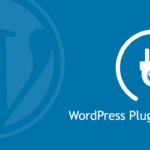Enhancing Accessibility on Your WordPress Site: A Comprehensive Guide
In today’s digital age, ensuring that your website is accessible to all users is not just a good practice; it’s a legal requirement. With over 1 billion people worldwide living with disabilities, it’s crucial for website owners to prioritize accessibility. WordPress, one of the most popular content management systems, offers a range of tools and features to help improve the accessibility of your site. In this article, we will explore ten key strategies to enhance WordPress accessibility on your site.
Enhancing WordPress Accessibility: A Comprehensive Guide
1. Understand Accessibility Guidelines

Before diving into making changes to your WordPress site, it’s essential to familiarize yourself with web accessibility guidelines. The Web Content Accessibility Guidelines (WCAG) provide a set of standards for creating accessible web content. These guidelines cover various aspects of accessibility, including perceivable, operable, understandable, and robust principles.
2. Choose an Accessible Theme
Selecting an accessible theme is the foundation of creating an inclusive website. When choosing a WordPress theme, look for options that are designed with accessibility in mind. Themes that follow best practices for coding, typography, color contrast, and navigation will help ensure that your site is accessible to all users.
3. Use Alt Text for Images
Images play a crucial role in engaging website visitors, but they can also pose challenges for users with visual impairments. By adding descriptive alt text to images on your WordPress site, you provide essential information for screen readers and assistive technologies. Alt text should accurately describe the content and purpose of the image.
4. Provide Keyboard Navigation
Keyboard navigation is a fundamental aspect of web accessibility, as many users rely on keyboards to navigate websites. Ensure that your WordPress site is keyboard-friendly by allowing users to access all interactive elements using only the keyboard. Test your site’s navigation using the Tab key to ensure a logical and intuitive order.
5. Create Accessible Forms
Forms are common elements on websites for collecting user information, but they can be challenging for users with disabilities to navigate. When creating forms on your WordPress site, use clear labels, provide instructions for filling out the form, and ensure that form fields are properly labeled for screen readers.
6. Enhance Color Contrast

Color contrast is essential for making text content readable for all users, including those with visual impairments. Choose color combinations that provide sufficient contrast between text and background colors. Tools like color contrast checkers can help you ensure that your WordPress site meets accessibility standards.
7. Implement Heading Structure
Proper heading structure is crucial for organizing content and improving readability for users with disabilities. Use heading tags (H1, H2, H3, etc.) to create a logical hierarchy of content on your WordPress site. Headings help screen readers and users navigate through the content more efficiently.
8. Include Video and Audio Transcripts
Multimedia content such as videos and podcasts can enrich your website’s content, but they can present barriers to users with hearing impairments. Provide transcripts for video and audio content on your WordPress site to make the information accessible to all users. Transcripts also benefit users who prefer reading over watching or listening.
9. Optimize Readability
Enhancing the readability of your WordPress site benefits all users, including those with cognitive disabilities or reading difficulties. Use clear and concise language, break up long blocks of text with headings and bullet points, and choose readable fonts and font sizes. Consider using tools like readability checkers to assess the readability of your content.
10. Conduct Accessibility Testing
Once you have implemented accessibility improvements on your WordPress site, it’s essential to conduct thorough testing to ensure that all users can access and interact with your content effectively. Use accessibility testing tools and invite users with disabilities to provide feedback on the usability of your site. Regular testing will help you identify and address any accessibility barriers promptly.
Improving WordPress accessibility on your site is not just about compliance; it’s about creating a more inclusive online experience for all users. By following these ten strategies and prioritizing accessibility in your web design process, you can ensure that your WordPress site is welcoming and usable for everyone. Remember that accessibility is an ongoing effort, so continue to educate yourself on best practices and make regular updates to enhance the accessibility of your site.
Greensoft can help to grow and promote your brand and company to show the best possible quality to your audience. With strategies and unique designs and sales solutions, it increases the audience. Examples of the work done by Greensoft are available here



